In my work the Pigna in the courtyard of Vatican is considered from the point of view of phyllotaxis and symmetry.
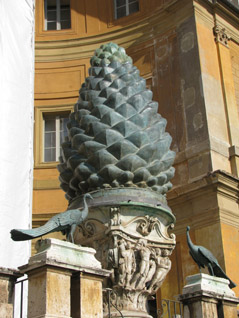
In 2011 I had the honor to be invited by Mr. Soddu to the XIV Generative Art International Conference. Needless to say the interest of the conference itself and the interest to visit the Eternal City for the Russian, who had never visited Italy - homeland of Leonardo Pisano and Leonardo da Vinci (chronologically). For me, the interest was to find an answer to the question, troubled me long time. Once in the television show I saw a giant pinecone, located in the Giardino della Pigna in the Vatican. I was struck by the statue naturalism.
Probably my most persuasive scientific passion is phyllotaxis
Phyllotaxis: from Ancient Greek phýllon "leaf" and taxis "arrangement". Phyllotaxis is the arrangement of the leaves.
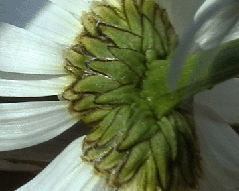
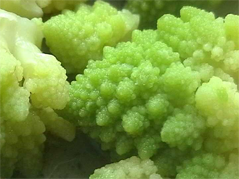

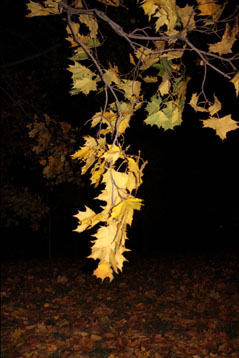
Many plants with spiral leaf arrangement forming elements (leaves, scales, spines, seeds, etc.) are arranged in rows distinguishable to the eye.
The eye tends to connect nearest points into spirals. These spirals are called parastichies. Usually there are two sets of parastichies winding in different directions.
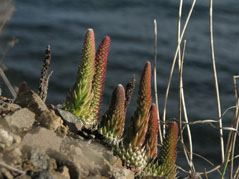
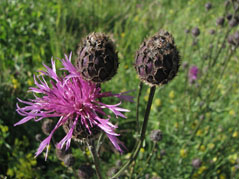
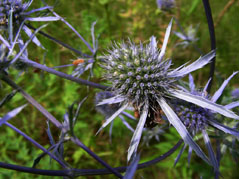
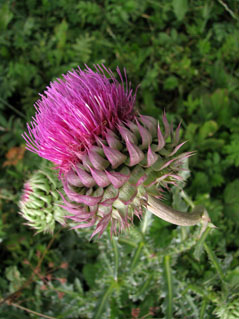
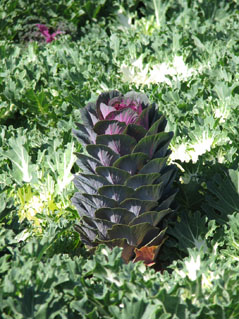
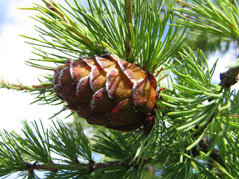
On the shoots of plants contact parastichies numbers are, typically, the Fibonacci numbers.
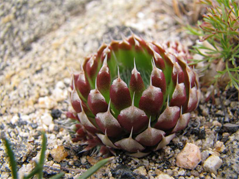
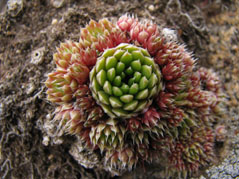
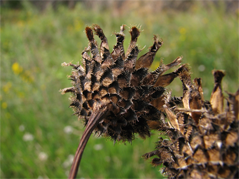
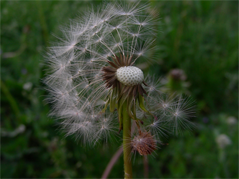
The name given in honor of Leonardo Pisano, who in 1202 published the famous Liber abaci. This book was first introduced a sequence of 1, 1, 2, 3, 5, ..., where each successive number is equal to the sum of the previous two.
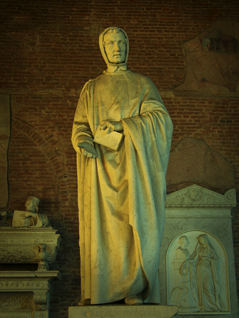
Anomalous Phyllotaxis
On very rare instances of plants (not taxonomic species) one can meet other series, such as 1,3,4,7,11 ... - LuAas numbers.
29:47 pattern
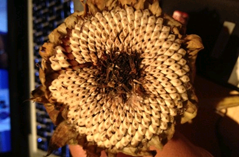
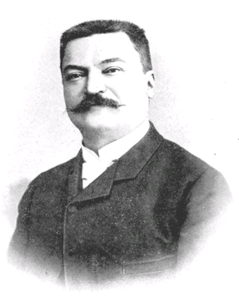
From http://www.turingsunflowers.com/blog/
François-Édouard-Anatole Lucas (1842-1891)
Different patterns are very similar
Fibonacci’s pattern 8:13:21
Lucas’ pattern 7:11:18
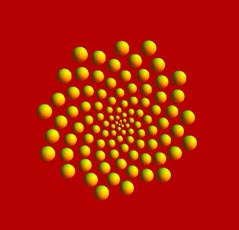
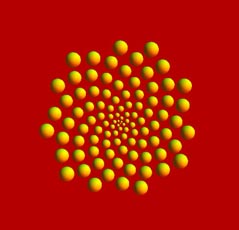
Multijugate phyllotaxis
Another example is 3, 3, 6, 9,..., where the numbers have a common factor greater than 1, in this case 3. Such phyllotaxis called multijugate.
In multijugate phyllotaxis, two or more botanical elements (three in the example above) grow at the same node.
In either case, the series constructed by the rule of the Fibonacci - each subsequent equals to the sum of the two previous ones, as mentioned above.
Often, multijugate patterns look very similar to spiral patterns and the only way to detect them is to count the number of spirals visible in the pattern.
Phyllotaxis (6:9)
Greatest common divisor = 3
Anomalous Phyllotaxis
The pinecone was found on campus of Technion City - Israel Institute of Technology, Haifa.

This pinecone has two apexes, like the double-headed eagle on the coat of arms of Russia.


The pinecone was found in Siberia near Lake Baikal.
The pinecone with two apexes
One can count the number of florets in inflorescence by order.
Rising phyllotaxis
Rising phyllotaxis - the phenomenon of change of the pair of contact parastichies due to changes in the diameter of vegetative shoots at different levels. A pair of (3:2) with increasing diameter of the cone is changed to (3:5) and then (8:5) etc. With decreasing radius on the opposite end of the cone there is the reduction of (8:5) – (3:5) – (3:2), etc.
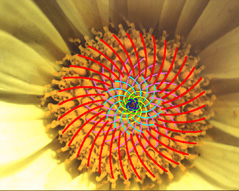
Parastichy families
“Glass and bubbles” model
Decussate leaf pattern
Alternate = spiral leaf pattern
Pigna = Flower
The Pigna in the courtyard of Vatican formerly crowned the dome of the Pantheon, Vitruvius called the flower.
From a mathematical phyllotactic point of view, there is no difference between pinecone and flower.
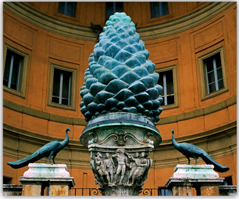
Decorative pinecones and Phyllotaxis
Decorative pinecones are often used as an ornamental element. But anatomy of ornamental pinecones in most cases is different from the anatomy of the vegetative ones. Artificial pinecones are too much artificial.
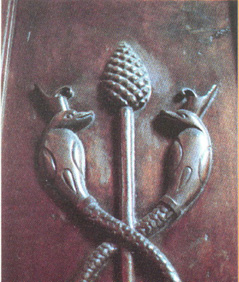
“Perché non parli?”
But pinecone in courtyard of Vatican looks like a living thing! Perché non parli !? - Why are you silent?
(Legend has it that upon the completion of Moses sculpture Michelangelo struck the right knee exclaiming, "Why are you silent!?" as he felt that life was the only thing left inside the marble.)
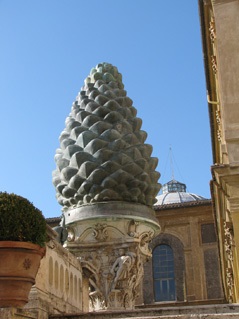
Ornamental and vegetable pinecones
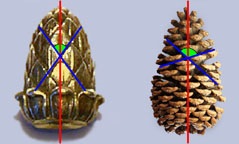
Decorative pinecones with Symmetry group DnL (nmL) don’t look like the Pigna
With Symmetry DnL (nmL), the shape or figure can be rotated and it still looks the same. How many matches there are as you go once around is called the Order n.
In other words, one can rotate (or turn) an ornamental pinecone around a center axis by less than 360° and the pinecone appears unchanged.
The Vatican Pigna does not look like a decorative pinecone.
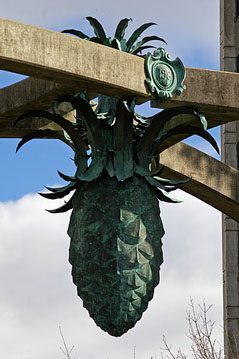
Artificial and Natural
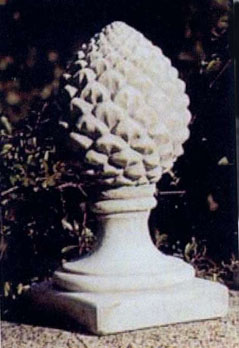
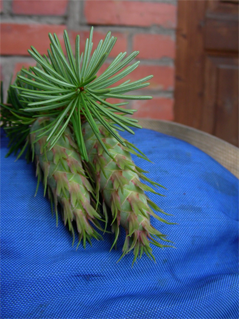
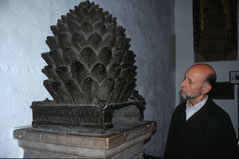
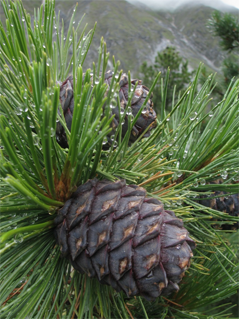
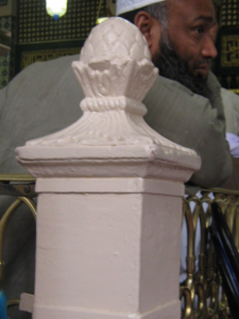
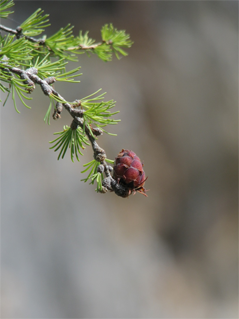
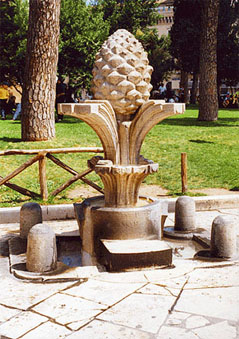
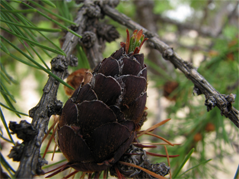
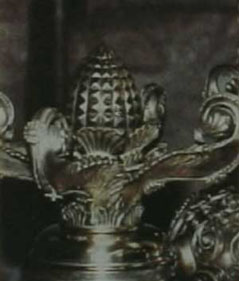
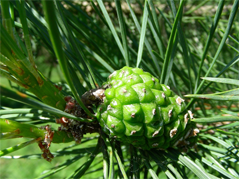
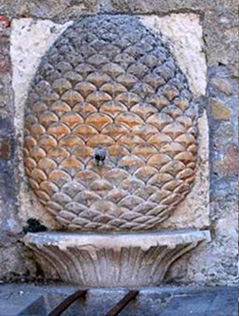
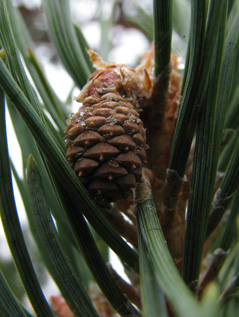
Number of parastichies in the pair of opposite families on Pigna
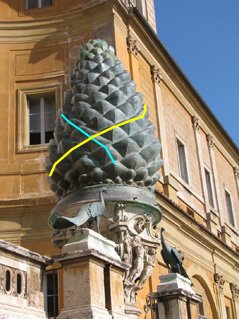
Unfortunately, I cannot vouch for the accuracy of counting the parastichies number in families of opposite parastichies of Pigna. Rough calculations yielded numbers close to 9 and 12.
Enantiomorphism Symmetry group L requires the left and right isomers
Left - Right
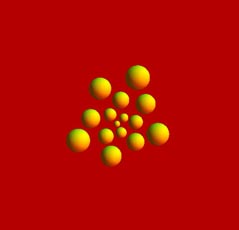
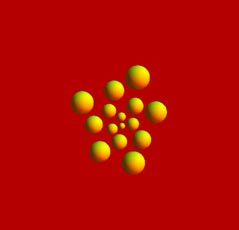
What kinds of enantiomorphs Nature prefers?
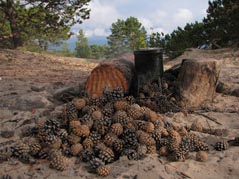
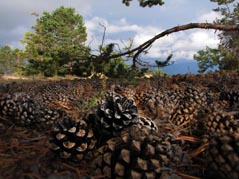
The enantiomorphs on pinecones
The ratio of left and right enantiomers is approximately equal 1:1 (48:52 in this experiment)
Enantiomorphism
Similarity Symmetry
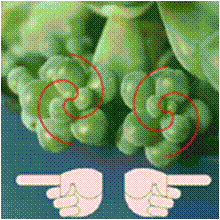
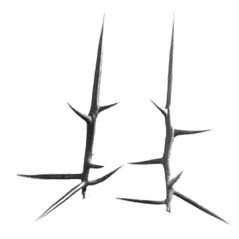
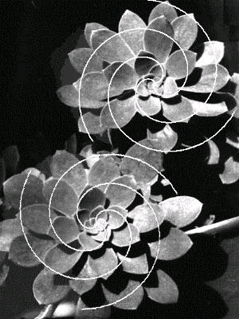
L1
The enantiomorphs on plants
Rising phyllotaxis of the Pigna
At the Vatican Pigna one can observe the phenomenon of rising phyllotaxis. At different levels of stem the numbers of contact parastichies are different. At the wide part of the cone the number is greater than at the narrow parts.
Some parastichies (orange) do not reach the top. The number of parastichies on different levels of the Pigna is different
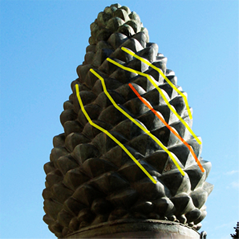
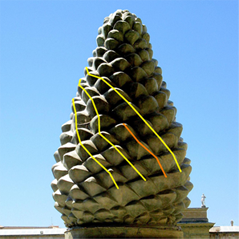
The Pigna symmetry is ambiguous
At the first blush, the Pigna corpus is monolithic, but in fact it divided into two pieces: the body and the cap. The boundary of these fragments is barely visible seam. The texture and color of the cap surface also differ from those on the body.
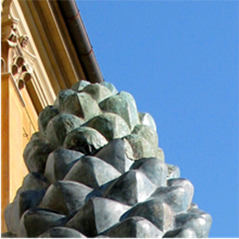
There are indications in the fall of the Pigna during the storm, possibly as a result of lightning.
In my humble opinion, that is just the author damaged his creation, as Michelangelo, who hit with a hammer the sculpture of Moses and exclaimed, “Perché non parli !?”
I guess also that that is remnant of the copper coating, which previously covered the entire cone and glistened in the sun.
The symmetric properties of the cap and the body are different.
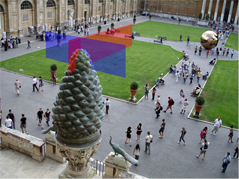
The cone body has the symmetry properties of the similarity
(L1 symmetry group).
The cap has a mirror or bilateral symmetry properties
(D2 symmetry group).
The top has two planes of mirror symmetry:
The median plane of symmetry coincides with the plane of symmetry of the courtyard.
The frontal plane is parallel to the wall of the museum behind the Pigna.
These planes are perpendicular to one another. The line of intersection coincides with the axis of the cone. Around this axis, we observe the similarity symmetry of the body.
Conclusion:
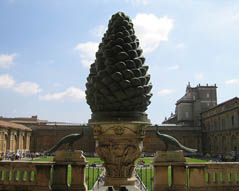
Formal symmetric properties of the Pigna are very similar to those of natural pine cone.
In my opinion the Pigna is an artwork (not a copy of a natural pinecone). Otherwise, with great probability would be the pattern of the Fibonacci numbers (it is possible). Let's wait for additional measurements. The question remains open.
The ancient master P. CINCIVS P. L. CALVIVS possessed powers of observation and knowledge, which later were lost. He was close to nature.
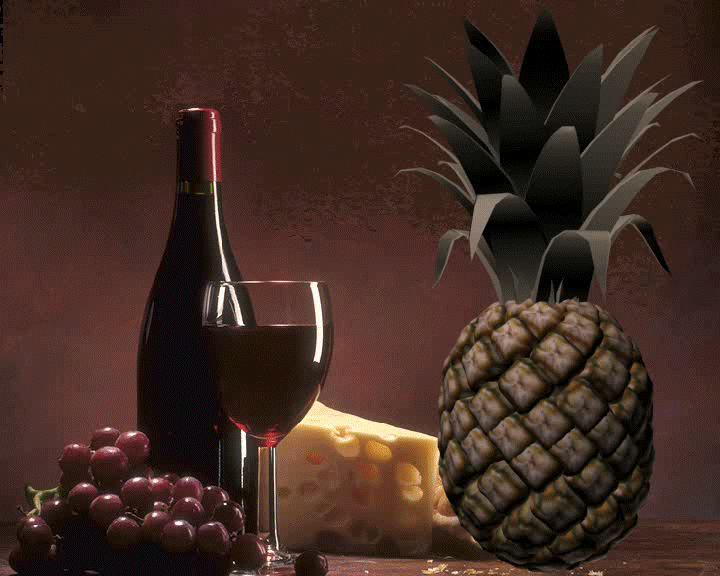
Grazie! Thanks for attention!
